After covering the best BL Yaoi anime series, it’s time to turn our attention to the world of girls’ love aka Yuri anime series.
Yuri anime has gained widespread popularity for its nuanced portrayal of romantic relationships between girls. It often offers delicate psychological insights and a unique, immersive worldview.
As the genre continues to expand, with more titles released in recent years, the sheer variety of Yuri anime can make it hard to know where to start.
Whether you’re a longtime fan or new to the genre, navigating the growing selection can be overwhelming. To help you dive in, I’ve put together a list of the top underrated Yuri anime that capture the essence of this beloved genre.
From heartwarming tales to emotionally complex narratives, these recommendations will guide you to the best of what Yuri anime has to offer.
So without further ado, let’s go:
Aoi Hana (2010):
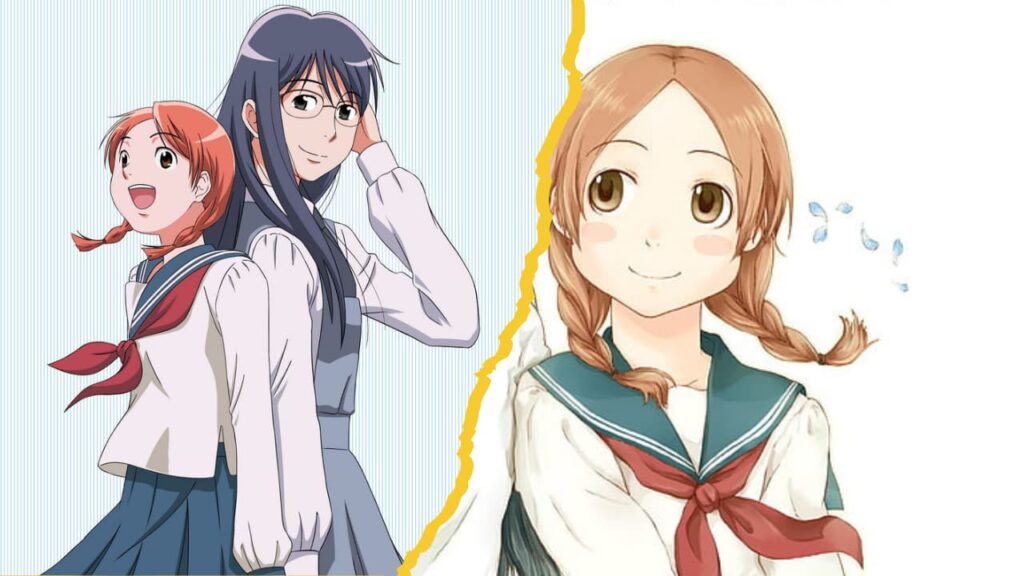
Aoi Hana stands out as an understated exploration of adolescence, set against the backdrop of Shoudo Girls Academy. The anime follows Fumi Manjoume and Akira Okudaira, childhood friends who reconnect after years of separation.
Fumi, the main female lead, is reserved and sensitive. She struggles with her attraction to other girls and the complexities of unrequited love.
Akira, in contrast, is cheerful and unwavering in her support, balancing Fumi’s emotional turmoil with her spirited nature. Their relationship forms the heart of the narrative, capturing the delicate process of finding oneself.
The world-building is grounded in realism, using the prestigious all-girls school as a microcosm for broader social issues and the subtle dynamics of same-gender love.
The school setting, with its strict hierarchies and unspoken rules, serves as both a refuge and a crucible, reflecting the pressures and expectations of society at large.
Fumi’s initial infatuation with an upperclassman, Yasuko Sugimoto, sets off a series of events that ultimately strengthen her bond with Akira.
“What is the worth of a love that can never be spoken?” Fumi’s quiet question reverberates throughout the series, encapsulating the essence of concealed emotions and societal restraint.
The animation, with its soft pastel palette, evokes a gentle yet melancholic tone, mirroring the fragility and fleeting nature of youth.
What makes Aoi Hana captivating is its subtle, nuanced portrayal of same-sex relationships, devoid of sensationalism. Instead, it focuses on the authenticity of its characters’ emotional journeys.
The series is a gentle reminder that love, in all its forms, deserves the courage to be acknowledged and nurtured, no matter how tentative or unpolished.
YuruYuri (2011):

“YuruYuri” playfully blends slice-of-life humor with yuri undertones, creating a lighthearted exploration of friendships and schoolgirl crushes.
Set in the Amusement Club—an unofficial club within the fictional Nanamori Middle School—the series revolves around four unique leads: Akari Akaza, the seemingly “invisible” protagonist; the tomboyish and mischievous Kyoko Toshino; the refined and reserved Yui Funami; and the doting Chinatsu Yoshikawa.
Each character’s personality shapes the comedy and the subtle romantic tensions, making the mundane setting feel vibrant and dynamic.
The world-building laid in Yuru Yuri affectionately serves as a parody of school life in Japan. The show’s universe doesn’t rely on fantastical elements but instead builds on the intricacies of youthful relationships, exaggerating common Yuri tropes to create charming humor.
Its strength lies in depicting the nuances of admiration and jealousy, all while poking fun at its own genre conventions. “Even if my feelings seem silly or small, they’re real,” Kyoko muses in a rare introspective moment, her words capturing the sincerity that underpins the show’s playful exterior.
The journey through their school days isn’t marked by epic events but by small moments—like Akari’s constant struggle to stand out or Chinatsu’s hilariously misguided affections for Yui.
These interactions are elevated by a delicate balance of humor and genuine emotion, making the series more than just lighthearted fluff.
Citrus (2017):
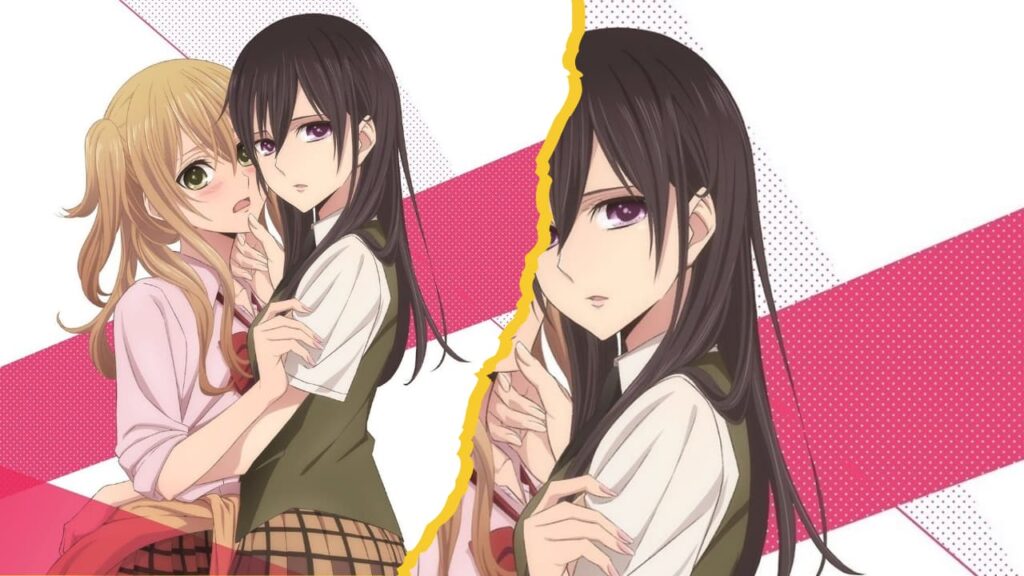
“Citrus” explores the tangled emotions and complicated dynamics while elaborating on the forbidden love between two stepsisters, Yuzu Aihara, and Mei Aihara, against the backdrop of a conservative all-girl high school.
Yuzu is an expressive, fashion-forward girl who struggles to fit in her new school’s rigid environment, while Mei is the disciplined and stoic student council president, seemingly untouchable.
Their clashing personalities lead to an unexpected attraction, intensified by the fact that they are now living under the same roof.
The series builds its world around the isolation and intensity of teenage life, where the confines of the school amplify the stakes of their evolving relationship.
“When love defies expectations, it doesn’t ask for permission,” Yuzu muses, reflecting the unpredictability of their connection. The narrative touches on themes of forbidden love, identity, and self-acceptance, as Yuzu’s cheerful resilience slowly unravels Mei’s tightly wound defenses.
The animation, though not groundbreaking, yet captures the emotional nuance in the girls’ expressions, from Mei’s subtle hesitations to Yuzu’s wide-eyed intensity.
Visually, the show uses contrasting colors and lighting to mirror their internal struggles—Yuzu’s world is full of vibrant hues, while Mei’s feels muted, underscoring the tension between them.
Their journey is fraught with misunderstandings, jealousy, and gradual vulnerability, making it a compelling but often uncomfortable exploration of adolescent desire.
“You confuse me, frustrate me… but you also make me feel alive,” Yuzu admits, highlighting the series’ complex portrayal of yearning and confusion.
In the end, “Citrus” doesn’t strive for neat resolutions but instead delves into the messy, often contradictory nature of first love, leaving the audience with the sense that true understanding is a process that transcends the traditional definition of feminine love.
Bloom into You (2018):
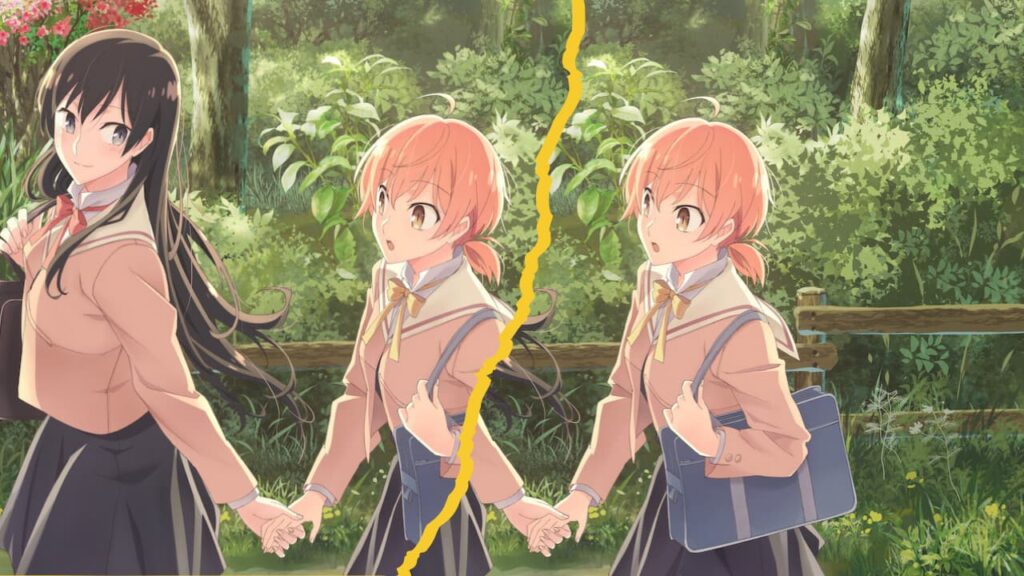
“Bloom Into You” stands out within the Yuri genre for its nuanced portrayal of self-discovery and emotional vulnerability.
The anime centers around Yuu Koito, a high school girl longing for the romantic sensations often described in fiction but feeling a disconnect when she confesses to it.
This changes when she encounters Touko Nanami, the seemingly confident student council president. Touko harbors her own complexities, burdened by the fear of being unlovable due to her inability to reciprocate genuine emotions.
Their dynamic forms the crux of the story: an exploration of two individuals masking their insecurities behind the façade of expectations.
The world-building is rooted in the high school setting, but it’s the psychological and emotional landscape that forms the true battleground.
“I’m afraid of falling in love because if I do, I’ll have to show the real me,” confesses Touko, embodying the series’ mature treatment of identity and acceptance.
Each encounter between Yuu and Touko is laden with delicate tension, revealing that intimacy is as much about vulnerability as it is about desire.
The journey of these two is further elevated by exquisite animation from studio TROYCA, with its meticulous attention to detail and ethereal use of lighting.
Moments of introspection are captured in soft, muted hues, while intense emotional confrontations are amplified by vivid contrasts. This visual storytelling subtly mirrors the characters’ internal struggles, creating a captivating atmosphere.
“Bloom Into You” is not about dramatic confessions or grand gestures, but about the gradual unraveling of masks.
By the end, it suggests that love is less about finding someone who fills a void, and more about finding the courage to be seen.
This delicate message, wrapped in an honest exploration of unspoken fears, makes the series a resonant gem within its genre.
Happy Sugar Life (2018):
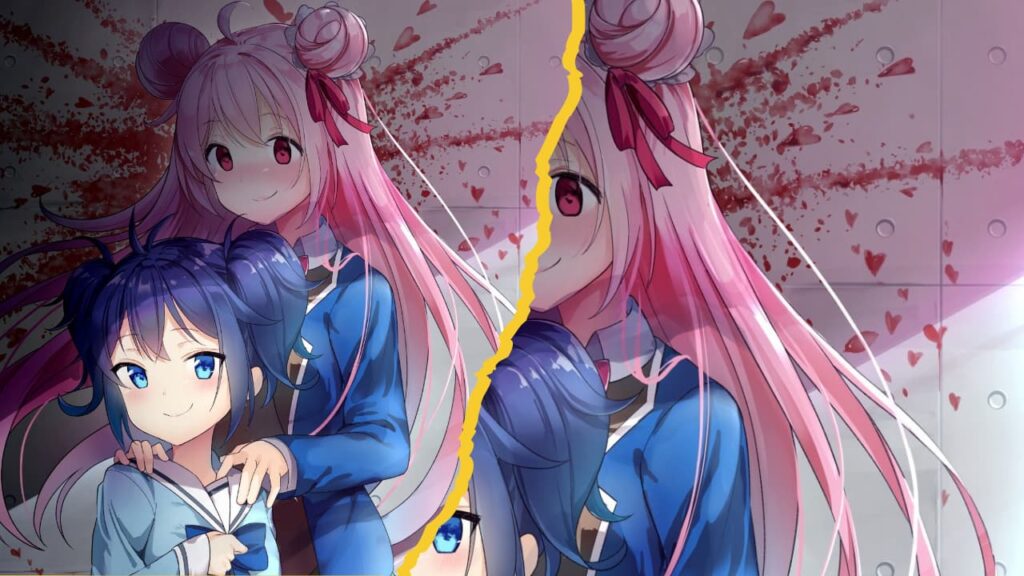
Happy Sugar Life presents itself as a yuri anime but quickly distorts that sweetness into a psychological horror anime, capturing the twisted dynamic between its main characters, Satou Matsuzaka and Shio Kobe.
Satou, a seemingly normal high school girl, harbors a disturbing obsession with Shio, a young girl she has abducted and locked away.
Their world-building revolves around Satou’s desperate attempts to maintain a façade of innocence while protecting her “happy sugar life” with Shio.
The origin of this distorted world is rooted in Satou’s traumatic past, where love and violence are inseparably intertwined, shaping her warped view of affection.
What’s compelling about this journey is the contrast between Satou’s outward charm and her ruthless capacity to manipulate and eliminate anyone who threatens her relationships.
“If love is just a hallucination… then I’d rather live in that hallucination forever,” Satou’s chilling acceptance of her delusion deepens the unsettling atmosphere, making each moment with Shio feel both tender and terrifying at the same time.
As her facade crumbles, the narrative explores not just the boundaries of love, but the darkness that love can veil.
The animation is striking in its contrast—bright, candy-colored hues amplify the innocence of Shio’s world, while darker, grotesque imagery punctuates Satou’s unraveling sanity.
With its eerie use of visual metaphors, the series blurs the line between fantasy and reality, making viewers question if the idyllic life Satou envisions ever truly existed.
Ultimately, *Happy Sugar Life* isn’t just about obsession; it’s about how easily innocence can be shattered by trauma.
The ending, bittersweet and haunting, suggests that no matter how much Satou sought to preserve her “sugar-coated” life, reality seeps through, revealing that even the purest love can become toxic when poisoned by fear and desperation.
Adachi to Shimamura (2020):
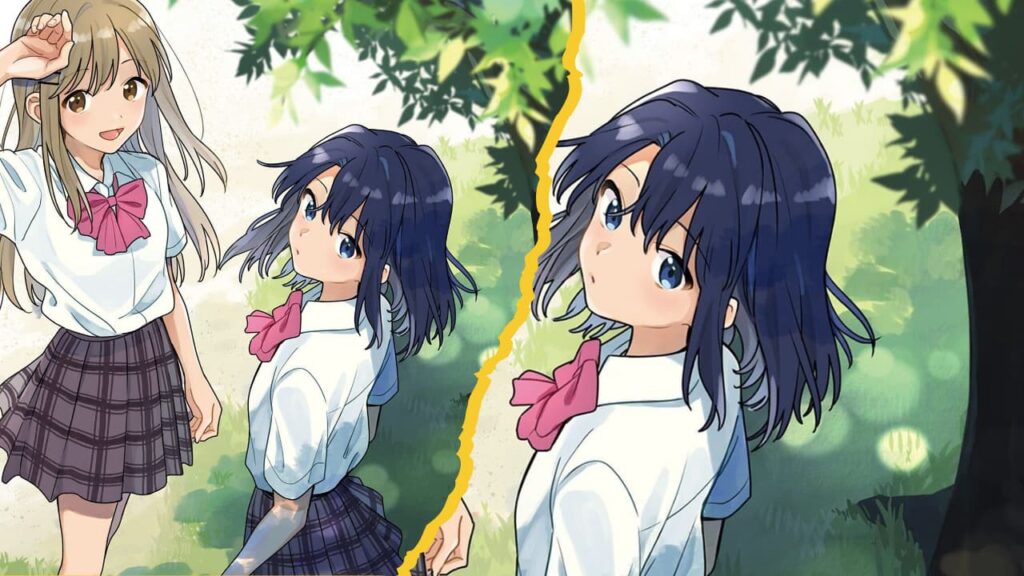
Some readers may already be aware, but for those who aren’t, Adachi to Shimamura offers character and art designs reminiscent of Chunibyo & Other Delusions, as both series are illustrated by Non-sensei.
Although with the release news of Adachi to Shimamura Volume 9 on October 10, 2020, it was announced that Non-sensei, who has been with the series until now, has stepped down due to production changes with Shizue Kaneko and later
Raemz taking over the role.
That being said, Adachi to Shimamura is a delicate portrayal of blossoming romance, capturing the hesitant, introspective journey of two high school girls, Sakura Adachi and Hougetsu Shimamura.
The narrative unfolds in a quiet suburban town, where school corridors, rooftop spaces, and a local gym become the backdrop for their deepening connection.
What sets this Yuri anime apart is its focus on the emotional subtleties of yearning and the fear of rejection.
In contrast, the world itself feels intentionally mundane—almost suspended in time—mirroring the tentative, almost dreamlike nature of Adachi’s feelings.
Adachi, shy and introspective, finds herself struggling with a growing love for Shimamura, whose more carefree and nonchalant personality creates a poignant contrast.
“When I’m with you, time feels like it’s moving in slow motion,” Adachi confesses, reflecting her perception of their moments together as precious and fleeting.
Shimamura, in turn, sees Adachi as a curious presence, someone who complicates her life’s simplicity.
The dynamic between them is a careful dance between desire and uncertainty, with every glance and unspoken word carrying the weight of unsaid emotions.
An interesting element is how their relationship evolves amid subtle supernatural undertones—embodied by Yashiro Chikama, a mysterious childlike character in a spacesuit.
Yashiro’s presence blurs the line between reality and fantasy, hinting at deeper symbolic meanings around loneliness and companionship.
The series doesn’t lean into high-stakes drama; instead, it revels in small, intimate gestures—the brush of a hand, shared silences, and hesitant confessions.
“Adachi to Shimamura” stands out as a quiet, introspective yuri story that cherishes the fragility of adolescent love. Its beauty lies not in dramatic proclamations, but in the lingering moments of doubt and hope that resonate long after the final scene.
Before you go for avid fans of the series, here’s a quick trivia: Adachi to Shimamura offers character and art designs reminiscent of Chunibyo & Other Delusions, as both series are illustrated by Non-sensei.
Although with the release news of Adachi and Shimamura Volume 9 on October 10, 2020, it was announced that illustrator Non-sensei, who has been with the series until now, has stepped down due to production changes with Shizue Kaneko and later
Raemz taking over the role.



